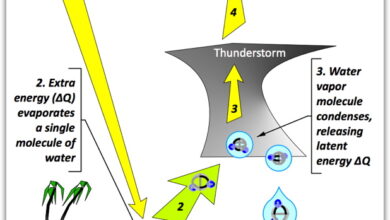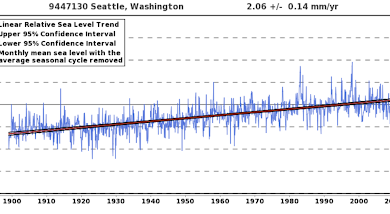CFACT Blasts Fed’s “Floating Wind” Fantasy • Watts Up With That?

David Wojick, Ph.D
CFACT President Craig Rucker has blown the whistle on Federal plans to put hundreds of floating wind generators off the Oregon coast. Floating wind is the latest green energy fantasy, taking its place along with hydrogen, EVs, battery storage, and net zero.
The idea is that where the water is too deep for conventional offshore wind generators, we will simply put these huge towers and turbines on floats. Pretty much all of the West Coast fits this bill, as does most of Maine.
Responding to a Federal request for comments on a big floating wind proposal for Oregon, Rucker explains clearly that the technology needed to do this does not exist and may never exist in an economically feasible form. The federal agency is the Bureau of Ocean Energy Management (BOEM). The plan is to designate hundreds of thousands of ocean acres as Wind Energy Areas and then start auctioning them off to floating wind developers.
His succinct comments are here: http://www.cfact.org/wp-content/uploads/2023/11/Comments-concerning-BOEMs-Draft-Wind-Energy-Areas.pdf
I want to dive into the technology a bit to show what a boondoggle floating wind really is.
First, let me say that, sure, we can put huge turbine towers on floats. Our fighter jets take off from and land on floats, right, floats called aircraft carriers. But they are really big, hence expensive. The same is true for floating wind, albeit at a somewhat smaller scale.
Look at it this way. Suppose you took a sailboat and put a 600′ tall mast on it. At the top, you put an 800-ton turbine with three 500′ long wind-catching blades. How big would that boat have to be not to blow over when hit by severe wind and waves?
The answer is very big indeed, in fact, huge. Now compare this huge float with the simple monopile that conventional offshore generators sit on. The monopile is a simple steel tube, maybe 30′ in diameter and a few hundred feet long, driven solidly into the ocean floor.
Compared to the huge float, the monopile is small and cheap. But simple monopile base offshore wind facilities are already tremendously expensive. Floating wind is projected to cost much more, from 2.5 to 3 times more, in fact.
In addition to the huge float holding up the turbine tower, there have to be a bunch of monster mooring chains anchored firmly to the ocean floor in all directions to keep the float from rocking too much in heavy seas or from capsizing. Then, too, the power lines taking off the electricity have to somehow get from these bobbing floats to the distant shore.
The highly specialized fabrication facilities and work boats required to make and install all this stuff in deep water do not exist. Given that over 50 vastly different floating wind designs have been proposed, we do not even know what to build.
I say projected because no utility-scale floating wind facility exists in the world today. BOEM is talking about quickly building thousands of Mega Watt (MW) of floating wind. Five leases pegged at 3,600 MW have already been sold off California. But as Rucker points out, the biggest facility in the world today is an experimental 88 MW and that just fired up a few months ago.
Those five California leases are, in effect, experimental. The developers are each going to try to produce an economically viable floating wind facility. As things stand, the odds are very long against them. I can hardly wait to see the Construction and Operations Plans, which are the first required step in the long road toward project approval.
But the ultimate crunch point is selling the juice via a Power Purchase Agreement (PPA). If costs run three times regular offshore wind, which is already extremely expensive, then the required PPAs might simply be unobtainable.
However, California just passed a law allowing the State to directly buy offshore wind energy. Perhaps the plan is for the State to buy horrendously expensive electricity, sell it to the utilities at the much lower going wholesale rate, then let the taxpayers eat the losses. It is, after all, Crazy California.
Mind you, this silly game is being played around the world. Several countries have launched similarly speculative large-scale floating wind projects, and many more are talking about it. Of course, they are also talking about mass-scale hydrogen, EVs, and net zero. It is all part of the same green nonsense.
As for the American floating wind fantasy, stay tuned to CFACT as this engineering comedy unfolds.




